Amaltas (Cassia fistula): The Golden Shower Tree for Weight Loss
Amaltas(Cassia fistula), also known as Aragwadha, is a botanical wonder that has captured the attention of herbal enthusiasts and practitioners alike. With its vibrant yellow flowers cascading like a golden shower, this tree is not only visually striking but also harbors a wealth of health benefits. In this comprehensive article, we will explore the various facets of Amaltas, ranging from its nutrient profile to its diverse applications in promoting well-being. So, let’s delve into the world of this extraordinary tree and uncover its secrets.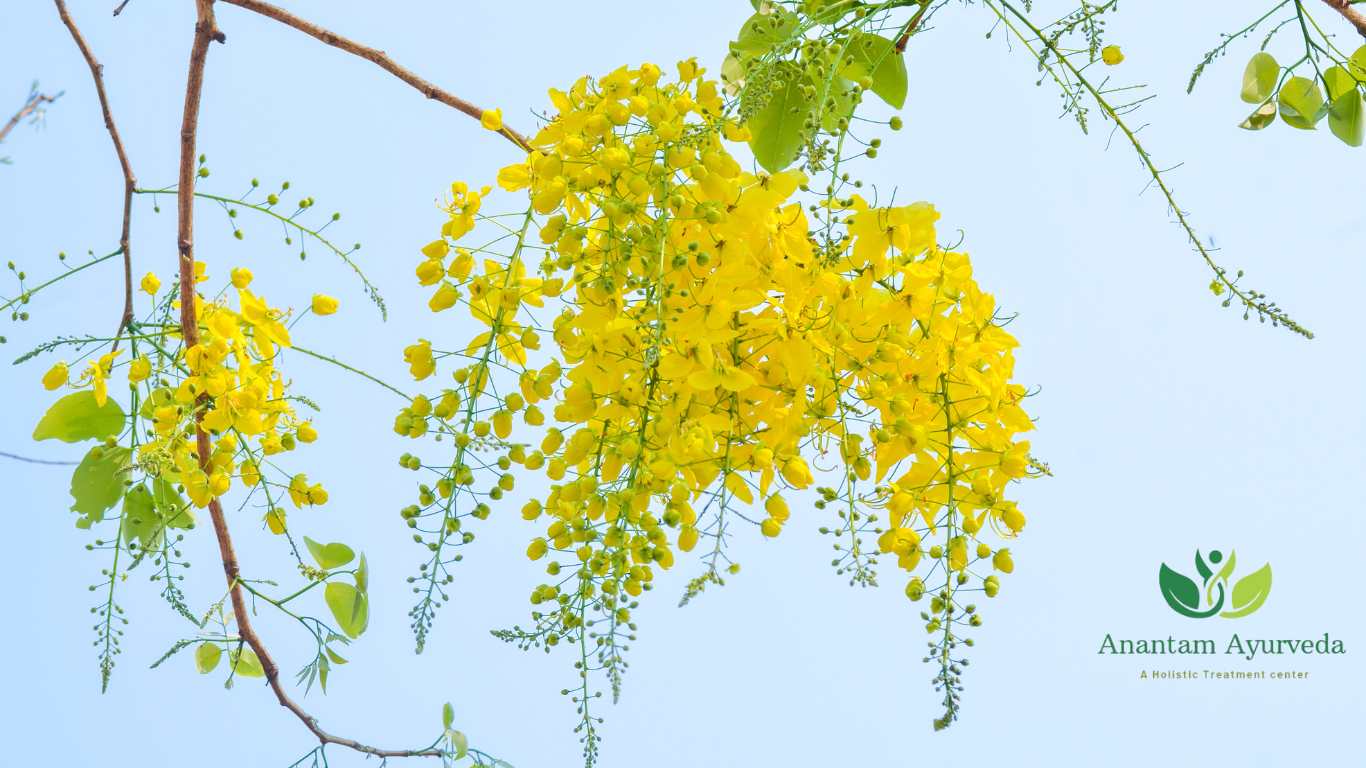
What is Amaltas(Cassia fistula)?
Amaltas, scientifically referred to as Cassia fistula, is a deciduous tree native to the Indian subcontinent. Its distinctive appearance is characterized by long, pendulous racemes of bright yellow flowers that resemble a cascade of gold, hence the poetic name “Golden Shower Tree.” The tree’s botanical name, Cassia fistula, originates from its use as a natural laxative. The term “Cassia” denotes its affiliation with the Cassia genus, while “fistula” alludes to its hollowed-out fruit pods that resemble tubes or pipes. Its alternate names, Amaltas and Aragwadha, pay homage to its distinct attributes, with “Amaltas” being derived from Arabic for “tamarind tree,” and “Aragwadha” from Sanskrit, signifying “disease killer.”
Botanical Classification of Amaltas
| Category | Details |
|---|---|
| Kingdom | Plantae |
| Sub-Kingdom | Tracheobionta (Vascular plants) |
| Super Division | Spermatophyta (Seed plants) |
| Division | Magnoliophyta (Flowering plants) |
| Class | Magnoliopsida (Dicotyledons) |
| Subclass | Caesalpinioideae |
| Order | Fabales |
| Family | Fabaceae (Leguminosae) |
| Genus | Cassia |
| Species | Cassia fistula |
| Botanical Name | Cassia fistula Linn. |
| Common Name | Amaltas / Indian Laburnum / Golden Shower Tree |
Vernacular Names of Amaltas (Cassia fistula)
Amaltas, known for its bright yellow flowers and therapeutic properties, is identified by various names across different regions in India and abroad:
-
Hindi: Amaltas
-
English: Purging Cassia (named so due to its purgative action)
-
Telugu: Rela
-
Tamil: Kondrem
-
Kannada: Phalus
-
Malayalam: Kanikonna
-
Marathi: Bahava
-
Gujarati: Garmalo
-
Bengali: Sondal
-
Punjabi: Girdanali
-
Farsi: Khiyar
Sanskrit Synonyms of Amaltas
Amaltas has several Sanskrit names, each highlighting a specific feature or medicinal benefit of the plant:
-
Aragwadha – Remover of diseases
-
Rajavruksha – The royal or majestic tree
-
Shampaka – Corrects digestion
-
Chaturangula – Fruits as long as four fingers
-
Arevata – Detoxifying agent
-
Suvarnaka – Beautiful golden-colored flowers and beneficial for complexion
-
Deerghaphala – Long fruits
-
Svarnabhushana – Golden ornament-like flowers
-
Kritamala – Tree appears decorated like with garlands during bloom
-
Pragraha – Adored by people due to its beauty
-
Amaha – Removes Ama (toxins)
-
Arogyasimbi – Pods are highly therapeutic
-
Kushtasudana – Cures skin diseases (Kustha)
-
Jvarantaka – Relieves fever (Jvara)
-
Vyadhighata – Effective against multiple diseases
-
Karnabharana – Flowers were once used as ear ornaments
Classical Categorization
-
Charaka Samhita:
-
Kushtaghna – Effective in skin diseases
-
Kandughna – Relieves itching
-
-
Sushruta Samhita:
-
Included in Aragwadadi gana and Shyamadi gana
-
-
Bhavaprakasha Nighantu:
-
Placed under Haritakyadi Varga (verses 148 – 150)
-
Varieties Identified in Ayurvedic Texts
According to Dhanvantari Nighantu and Raja Nighantu, two main varieties are described:
-
Aragwada
-
Karnikara
Morphological Features of Amaltas (Cassia fistula)
-
Habit: Medium-sized perennial deciduous tree
-
Stem: Erect, branched, cylindrical, woody, with greenish-grey bark
-
Leaves: Alternate, compound, petiolate, with wavy margins and reticulate venation
-
Inflorescence: Long, axillary, and pendulous racemes
-
Flowers: Pedicellate (with long stalks), bright yellow, hypogynous (ovary above floral parts)
-
Fruits: Very long, cylindrical legumes
-
Seeds: Flat, albuminous, embedded in a soft, sticky pulp
Useful Part of the Plant
-
Primary Useful Part: Fruit Pulp
-
Used in classical and folk medicine for its laxative, detoxifying, and anti-inflammatory actions.
-
Pharmacological Actions of Amaltas
-
Purgative – Promotes bowel movements and relieves constipation
-
Febrifuge – Reduces fever and has cooling properties
The Nutrient Profile and Useful Parts of Amaltas
Amaltas offers an array of bioactive compounds that contribute to its therapeutic potential. The key constituents include anthraquinones, flavonoids, tannins, and essential oils. These components collectively bestow Amaltas with its renowned antibacterial, anti-inflammatory, and antioxidant properties. The bark, leaves, flowers, and fruits of the Amaltas tree are all valued for their medicinal qualities.
Influence on Doshas
According to Ayurveda, Amaltas(Cassia fistula) has a notable influence on the doshas: Vata and Pitta. Its sweet taste and cold potency help pacify excess Vata and Pitta respectively, making it an effective remedy for sluggish digestion. It have some special effect as it causes mild purgation.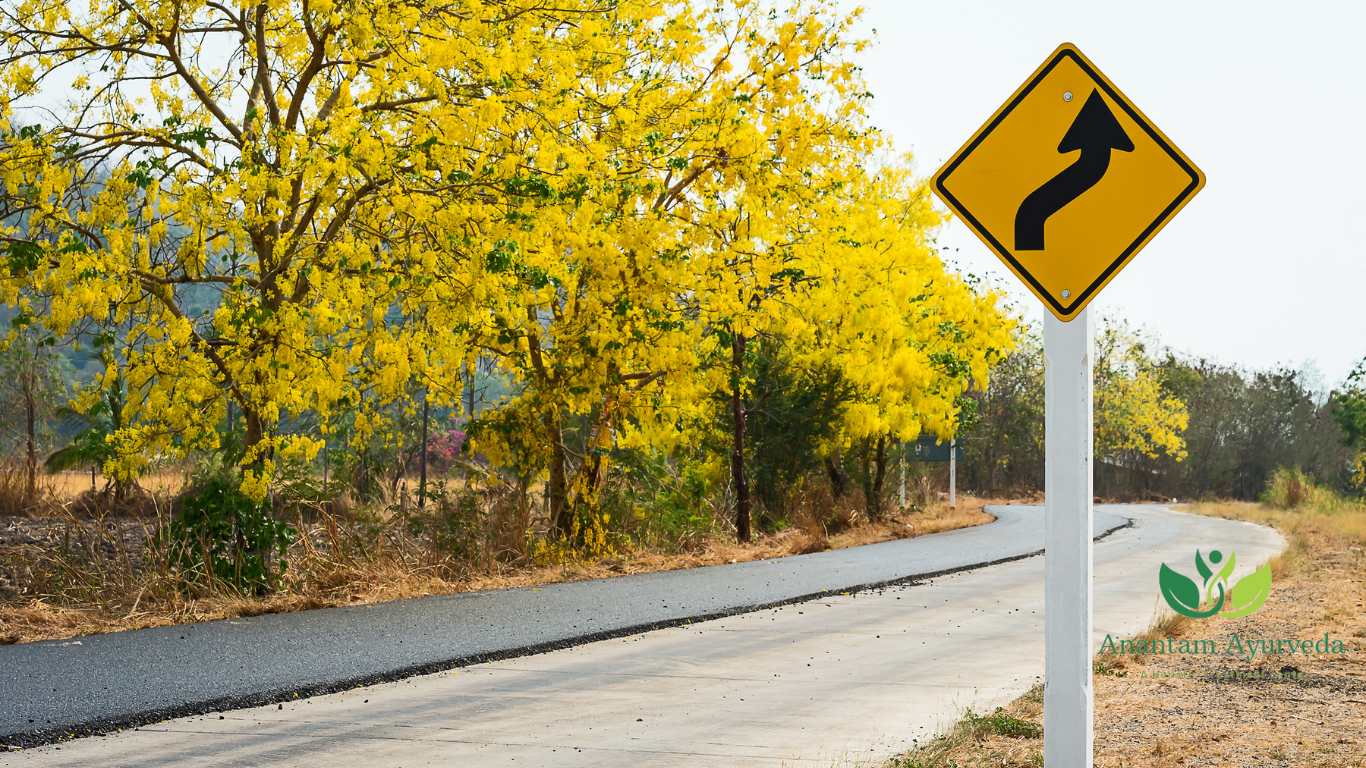
Medicinal Qualities of Aragwadha (Amaltas / Cassia fistula)
Ayurvedic Properties
-
Guna (Qualities): Mrudu (soft), Guru (heavy to digest), Snigdha (unctuous/oily)
-
Rasa (Taste): Madhura (sweet)
-
Vipaka (Post-digestive Taste): Madhura (sweet)
-
Veerya (Potency): Sheeta (cooling)
-
Effect on Doshas: Balances Pitta and Kapha
-
Prabhava (Unique Action): Sramsana – causes mild purgation
Therapeutic Actions by Plant Parts
| Part | Action |
|---|---|
| Fruit | Sramsana (mild purgative), Sulahara (relieves colic), Ruchya (appetizer) |
| Leaves | Virechaka (purgative), Meda visoshaka (reduces fat/tissue toxins) |
| Flowers | Grahi (absorbent, helpful in loose motions and digestive issues) |
Pharmacological Properties
-
Purgative: Gently clears the bowel, suitable even for the elderly and sensitive individuals
-
Antipyretic: Reduces fever
-
Analgesic: Alleviates pain
-
Anti-inflammatory: Reduces internal and external inflammation
-
Vermifuge: Expels intestinal worms
-
Cardio-protective: Supports heart health
-
Blood Purifier: Clears toxins from the bloodstream
Health Conditions in Which Aragwadha is Beneficial
-
Jvara – Fever: Used throughout the fever treatment course to remove Ama and support digestion
-
Hrudroga – Cardiac Disorders: Strengthens heart function
-
Pittasrava – Bleeding Disorders: Cools the body and reduces internal heat
-
Vata Udavarta – Bloating and upward movement of Vata: Relieves abdominal distension
-
Shula – Abdominal colic pain: Soothes gastrointestinal discomfort
Health Benefits of Amaltas(Cassia fistula)
The health benefits of Amaltas are truly impressive, making it a sought-after remedy in traditional medicine systems. Some of its notable benefits include:
1. Digestive Support
Amaltas is revered for its gentle yet effective laxative properties. The presence of anthraquinones stimulates peristalsis and promotes bowel regularity. It’s particularly helpful in alleviating constipation and encouraging a healthy digestive process.
2. Skin Care
The antibacterial and anti-inflammatory attributes of Amaltas make it a valuable asset in skin care. It helps soothe various skin conditions, such as itching, rashes, and major skin disorders. Additionally, its detoxifying properties contribute to a clearer complexion.
3. Immune Boosting
Rich in antioxidants, Amaltas aids in neutralizing harmful free radicals and bolstering the immune system. Regular consumption can contribute to improved overall immunity and vitality.
4. Diabetes Management
Amaltas exhibits hypoglycemic effects, which can assist in regulating blood sugar levels. However, individuals with diabetes should consult a healthcare professional before incorporating it into their regimen.
Home Remedies Using Amaltas (Cassia fistula)
Here are some simple and time-tested home remedies prepared from Amaltas parts, each offering unique health benefits:
1. For Ringworm and Itching
Fresh Leaf Paste
Take a handful of mature fresh Amaltas leaves. Crush them into a fine paste without adding water. Apply this paste directly to affected areas of the skin.
Benefits: Effective in treating ringworm, itchy skin, and mild cases of eczema.
2. For Worm Infestation
Leaf Decoction or Fresh Juice
Take 20–30 grams of Amaltas leaves. Prepare fresh juice or boil the leaves in water to make a decoction.
-
Children: 20 ml on an empty stomach
-
Adults: 40 ml on an empty stomach
Administer this for 5–6 days.
Benefits: Helps eliminate pinworms and other intestinal worms.
This remedy is also used in veterinary practice, especially for cattle, in higher doses.
3. For Constipation and Blood Disorders
Stem Bark Decoction
Take 15–20 grams of stem bark, add 2 cups of water, and boil until reduced to half a cup. Filter and drink.
Benefits: Relieves constipation, abdominal bloating, and helps in chronic blood-borne disorders due to its detoxifying properties.
4. As a Natural Purgative
Fruit Pulp
Take a mature pod (3–4 inches), remove the pulp and discard the seeds. Optionally mix the pulp with a little jaggery for taste. Consume this in the evening.
Benefits: Acts as a mild purgative, producing 2–3 soft bowel movements.
Especially useful for individuals suffering from long-standing constipation.
5. For Jaundice and Poor Appetite
Tender Buds and Flower Soup
Use a fistful of tender leaf buds or yellow flowers. Prepare a soup using jaggery, a pinch of salt, and black pepper (similar to Rasam). Drink 50–100 ml daily.
Benefits: Aids in managing jaundice, restores appetite, and acts as a digestive stimulant.
Cultural Belief and Weather Prediction
The Amaltas tree, also known as Aragwadh, is highly regarded in Indian villages. Its striking appearance—golden-yellow flowers on a leafless tree—makes it a sight to behold. Villagers believe that rainfall begins exactly on the 30th day after the tree starts flowering, making it a natural weather forecaster in rural folklore.

Scientific Research on Cassia fistula Linn. (Amaltas)
Cassia fistula Linn., commonly known as Amaltas or the Indian Laburnum, is a medicinal plant widely recognized in traditional systems of medicine, particularly Ayurveda. Various parts of the plant—especially the fruit pulp, leaves, bark, and flowers—have been studied for their pharmacological activities through in vitro, in vivo, and limited clinical research models.
1. Laxative and Purgative Activity
The pulp of Cassia fistula fruits contains anthraquinone derivatives (e.g., rhein, chrysophanol), which exhibit well-documented cathartic and laxative effects.
-
Study: A controlled experimental study published in the Indian Journal of Pharmacology demonstrated significant laxative action in animal models, comparable to standard purgatives but with fewer gastrointestinal side effects.
-
Mechanism: The compounds stimulate peristalsis and increase water retention in the colon, facilitating smooth bowel evacuation.
2. Antimicrobial and Antifungal Properties
Various extracts (methanolic, ethanolic, aqueous) of Cassia fistula leaves, bark, and pod pulp exhibit broad-spectrum antimicrobial activity.
-
In vitro results: Studies have reported inhibitory effects against Escherichia coli, Staphylococcus aureus, Pseudomonas aeruginosa, and Candida albicans.
-
Active constituents: Phenolics, tannins, and flavonoids are believed to exert bacteriostatic and fungistatic effects via membrane disruption and inhibition of microbial enzymes.
3. Anti-inflammatory and Analgesic Activities
The stem bark and leaf extracts of Cassia fistula possess significant anti-inflammatory and analgesic properties.
-
Study: A study in Phytotherapy Research found ethanolic bark extract reduced paw edema and delayed pain response in rodent models induced with carrageenan and formalin.
-
Mechanism: Likely mediated through inhibition of prostaglandin synthesis via downregulation of COX-2 and other inflammatory mediators.
4. Antioxidant Capacity
The flowers and fruits are rich in natural antioxidants, including flavonoids, ascorbic acid, and polyphenolic compounds.
-
Study: DPPH radical scavenging assays have demonstrated high antioxidant potential, suggesting a protective role against oxidative stress-related cellular damage.
-
Significance: These properties support its use in chronic inflammatory, neurodegenerative, and aging-related disorders.
5. Antidiabetic Effects
Research indicates that Cassia fistula possesses hypoglycemic and antidiabetic properties.
-
Study: An investigation in the Journal of Ethnopharmacology demonstrated that alcoholic extracts of seeds and bark significantly reduced fasting blood glucose levels in streptozotocin-induced diabetic rats.
-
Proposed mechanism: May involve enhancement of insulin secretion, increased glucose uptake, and inhibition of carbohydrate-hydrolyzing enzymes like α-amylase and α-glucosidase.
6. Hepatoprotective Effects
The fruit pulp and bark have been investigated for their potential liver-protecting effects.
-
Experimental model: In CCl₄-induced hepatotoxicity models, Cassia fistula extract significantly normalized serum transaminase levels (ALT, AST) and improved hepatic histopathology.
-
Conclusion: Suggests membrane-stabilizing and antioxidant activity contributing to hepatoprotection.
7. Antipyretic Activity
Traditional claims of Cassia fistula as an antipyretic agent have been validated.
-
Study: In rodent models with brewer’s yeast-induced fever, fruit and flower extracts exhibited significant temperature-lowering effects, attributed to prostaglandin inhibition.
8. Wound Healing and Dermatological Applications
Topical use of leaf paste has shown wound healing and antimicrobial benefits in preclinical studies.
-
Findings: Accelerated epithelial regeneration, increased collagen content, and reduced wound contraction time have been observed.
-
Phytochemical basis: Attributed to flavonoids, triterpenoids, and phenolic acids with antimicrobial and cell-regenerative properties.
9. Veterinary and Ethnoveterinary Uses
In rural and veterinary medicine, Cassia fistula leaf juice is traditionally used as an anthelmintic agent in livestock. Ethnoveterinary studies support its efficacy against gastrointestinal parasites in bovines and goats.
Current phytopharmacological research on Cassia fistula supports its traditional use in Ayurveda, particularly as a laxative, antimicrobial, hepatoprotective, antidiabetic, anti-inflammatory, and antipyretic agent. Further standardized clinical trials are required to confirm efficacy, establish dosage, and ensure safety for integration into modern therapeutic protocols.
Modern Applications and Innovations
1. Herbal Medicine Marvel
Amaltas/Aragwadha has seamlessly transitioned into modern herbal medicine. Extracts, powders, and supplements harness its therapeutic potential, offering natural alternatives for digestive health, detoxification, and more.
2. Cosmeceutical Charm
The beauty industry has embraced the botanical benefits of Amaltas/Aragwadha. Its inclusion in skincare formulations, such as creams and lotions, highlights its role in promoting healthy, radiant skin.
3. Eco-Friendly Dye
In the realm of sustainable practices, Amaltas/Aragwadha plays a role in dye production. Its pods yield a yellow dye, which can be harnessed for textiles, showcasing the versatility of this plant.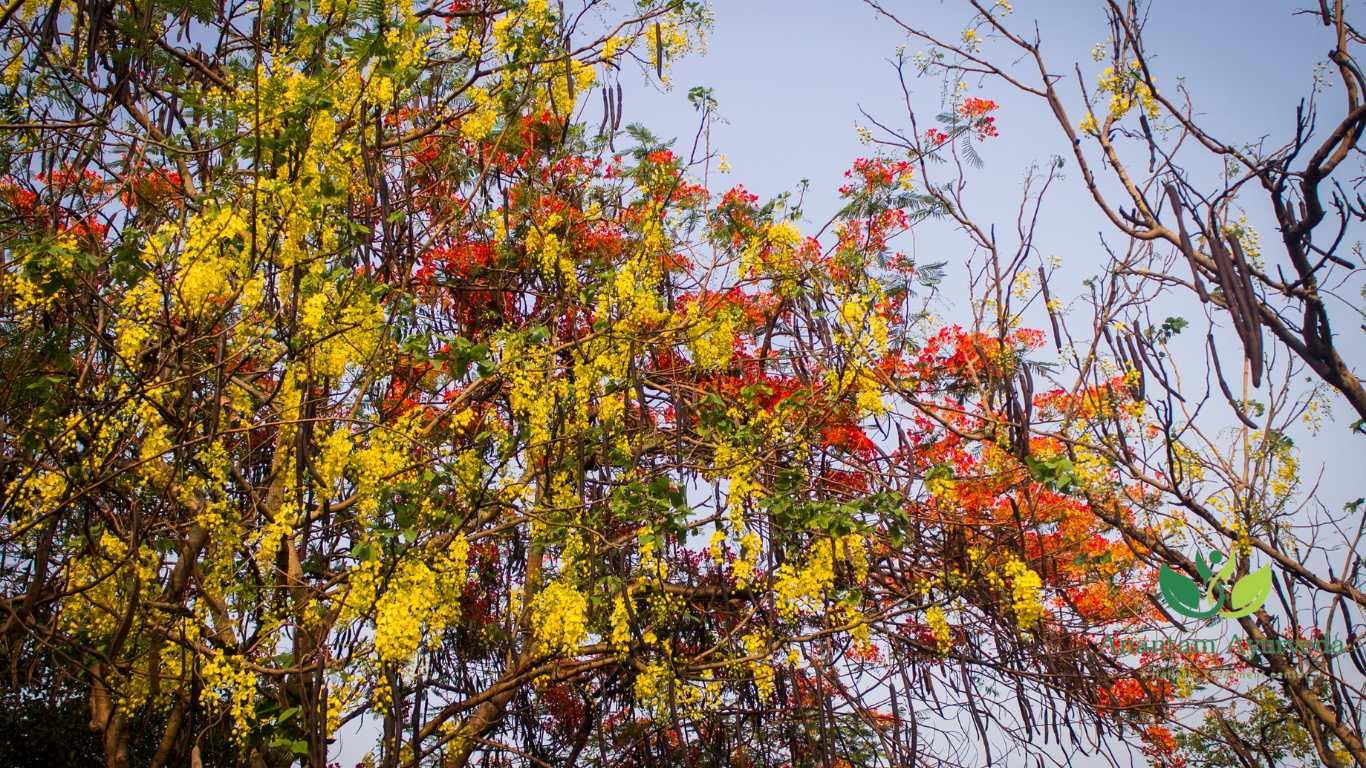
Parts Used and Dosage of Amaltas (Cassia fistula)
| Part Used | Form | Recommended Dosage |
|---|---|---|
| Fruit Pulp (Phala Majja) | Raw Pulp | 10 – 20 grams |
| Seed (Bija) | Powder (Churna) | 3 – 6 grams |
| Root Bark (Mula Twak) | Decoction (Kwatha) | 10 – 15 ml |
| Flower (Pushpa) | Fresh Juice (Swarasa) | 5 – 10 ml |
| Leaves | Used externally/in decoctions | As directed by physician |
| Stem Bark | Decoction or paste form | As prescribed |
Ayurvedic Formulations Containing Aragvadha (Amaltas)
| Formulation Name | Indications / Therapeutic Uses |
|---|---|
| Aragwadharishta | Used in treating skin diseases like eczema, psoriasis, and in detoxifying blood. |
| Aragwadhadi Kashayam | Effective in vomiting, pruritis, worm infestation, skin disorders, and non-healing wounds. |
| Aragwadhavaleha | Beneficial in constipation, skin problems, and inflammatory conditions. |
| Aragvadhadi Taila | Herbal medicated oil used externally for managing chronic skin diseases. |
| Haritaki Churna with Aragvadha | Acts as a natural laxative and detoxifier, supports digestion. |
| Maharasnadi Kashayam | Widely used in managing Vata disorders, joint pain, sciatica, and neurological disorders. |
| Maha Manjistadi Kashayam | Helpful in blood purification and treating skin diseases. |
| Kushta Rakshasa Taila | An external application oil effective in chronic skin ailments and itching. |
| Manasamitra Vatakam | Indicated in neuro-psychiatric conditions like anxiety, epilepsy, depression, and insomnia. |
| Triphala Guggulu | A detoxifying compound used for weight loss, digestive balance, and inflammation. |
| Aragvadha Phala Pinda Sweda | Used in fomentation therapy (Swedana) for musculoskeletal conditions, especially joint pain. |
| Aragvadhadi Kwath | A decoction used for skin cleansing and detoxification. |
How to Use Amaltas(Cassia fistula)
Amaltas, the Golden Shower Tree, offers versatile applications for various health benefits. Here’s a detailed breakdown of how to utilize its different forms:
1. Decoction for Digestion:
To aid digestion and alleviate constipation, prepare a decoction by boiling a small piece of Amaltas bark or a few dried flowers in water. Let it simmer for 10-15 minutes, strain the liquid, and consume it in the morning on an empty stomach. This can promote regular bowel movements and support a healthy digestive system.
2. Supplements for Convenience:
For those seeking the health benefits of Amaltas without the preparation process, standardized Amaltas extracts are available in supplement form. Consult a healthcare professional to determine the appropriate dosage and usage.
3. Topical Paste for Skin Care:
For skin issues like itching, rashes, or minor wounds, create a paste from Amaltas leaves or flowers. Crush the leaves or flowers and mix them with a small amount of water to form a soothing paste. Gently apply this paste topically to the affected area to help calm irritation and promote healing.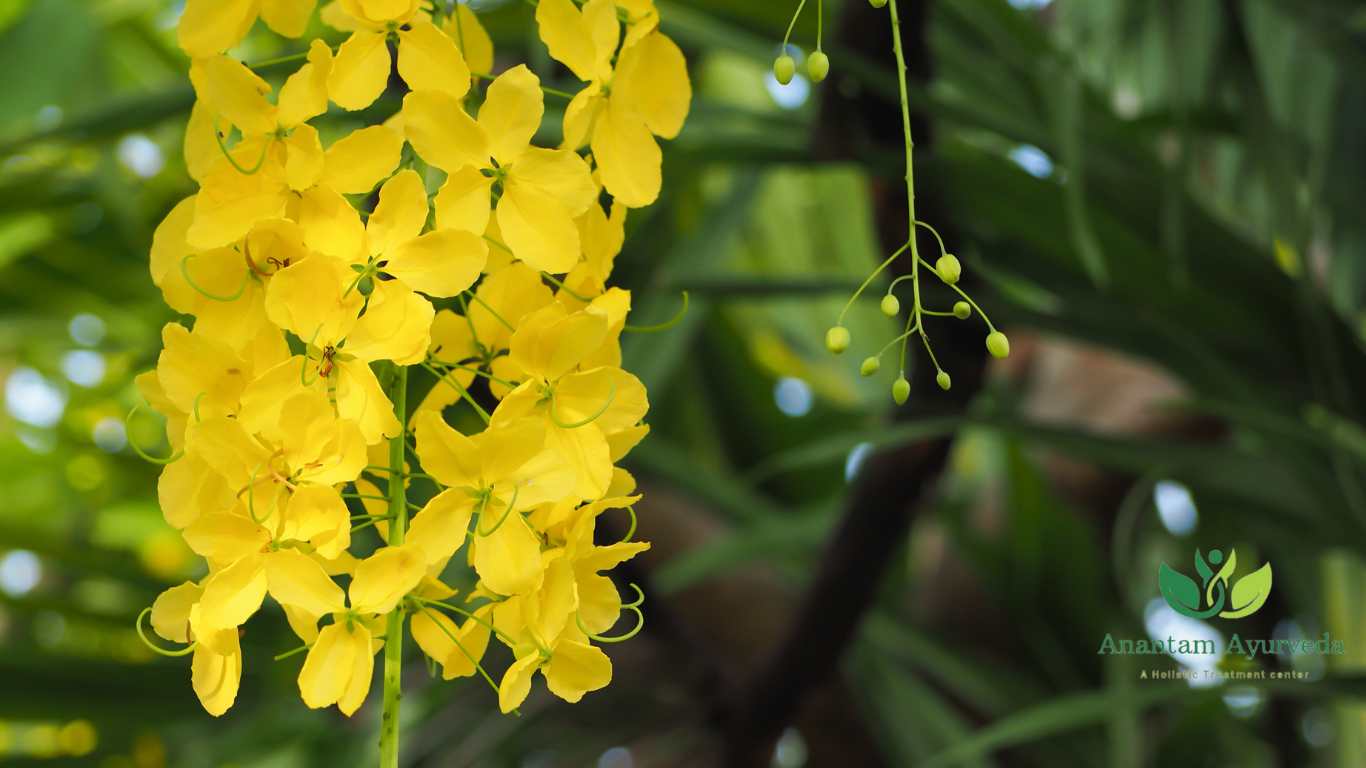
It’s important to note that while Amaltas offers valuable health benefits, it should be used mindfully and in moderation. Consider the following additional points:
- Consultation: Before incorporating Amaltas into your routine, especially in supplement form, consult a healthcare professional. They can provide personalized advice based on your health status and needs.
- Dosage: If using Amaltas supplements, follow the recommended dosage provided by the manufacturer or your healthcare provider.
- Balance: While Amaltas can be beneficial, it’s just one aspect of a healthy lifestyle. Maintain a balanced diet, engage in regular physical activity, stay hydrated, and prioritize overall well-being.
Amaltas offers a range of applications for digestive health, skin care, and more. Whether you choose to prepare decoctions, use supplements, or apply topical pastes, remember to do so with caution and seek professional advice when needed. Integrating Amaltas into your wellness routine can contribute positively to your health journey.
Safety and Precautions
While Amaltas is generally safe for most individuals when used in moderation, some precautions should be observed:
- Pregnant and breastfeeding women should avoid it.
- Excessive consumption may lead to gastrointestinal discomfort and heavy purgation.
- Individuals with diabetes should monitor their blood sugar levels closely when using it.
- It is contraindicated in Diarrhea
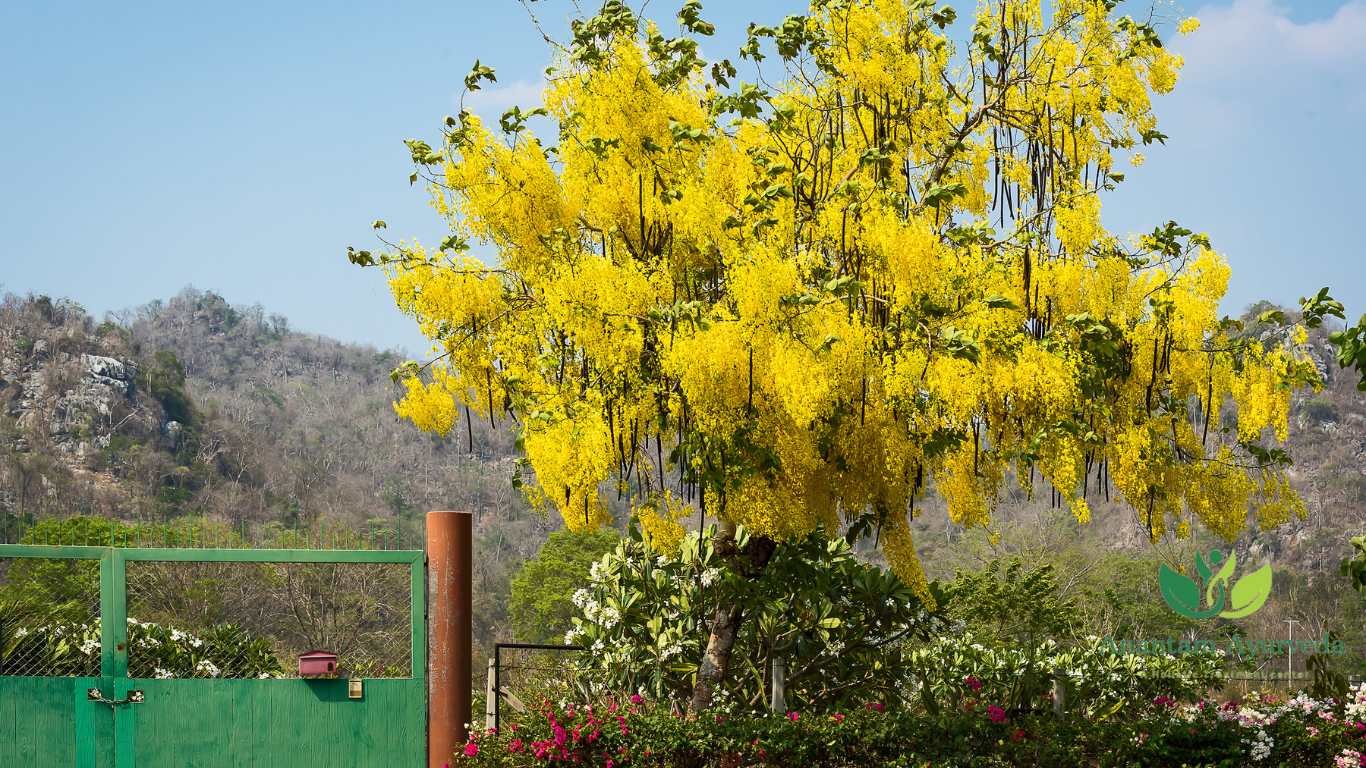
What are the Useful Parts of Amaltas?
Different parts of the Amaltas tree offer unique benefits:
1. Bark
The bark contains potent anthraquinones and is primarily used as a laxative and digestive aid.
2. Flowers
Amaltas flowers possess anti-inflammatory and antimicrobial properties, making them valuable for skincare and wound healing.
3. Fruit Pods
The hollowed-out fruit pods are the source of Amaltas’ common name, “Golden Shower Tree.” They are utilized for their laxative effects.
How to Use Amaltas for Weight Loss
Amaltas’ mild laxative properties can aid in weight loss by promoting regular bowel movements. However, it’s essential to combine its use with a balanced diet and regular exercise for optimal results.
How to Use Amaltas for Constipation
For constipation relief, prepare a decoction using Amaltas bark or flowers. This natural remedy can gently stimulate bowel movements and alleviate discomfort.
In conclusion, Amaltas, the Golden Shower Tree, stands as a testament to nature’s bounty of healing treasures. Its diverse applications, ranging from digestive support to skincare, make it a versatile remedy deeply rooted in traditional medicine. As you explore the myriad benefits of Amaltas, remember to approach its usage with mindfulness and seek professional advice when needed. Embrace the holistic potential of this golden gift from Mother Nature, and may your journey towards well-being be as vibrant as the blossoms of the Amaltas tree.
Frequently Asked Questions (FAQs) About Amaltas
1. What is Amaltas?
Amaltas, or Cassia fistula, is a medium-sized deciduous tree known for its vibrant golden-yellow flowers. Also called the Golden Shower Tree, it plays a vital role in traditional Ayurvedic medicine.
2. What are the medicinal uses of Amaltas?
Amaltas offers several health benefits:
-
Acts as a mild natural laxative
-
Treats skin conditions like eczema and ringworm
-
Reduces fever and inflammation
-
Purifies blood and supports liver health
-
Helps expel intestinal worms
3. Does Amaltas have any side effects?
When taken in large doses, Amaltas may cause mild side effects like abdominal cramps, diarrhea, or nausea. Always use the recommended dosage and consult a practitioner for long-term use.
4. Can pregnant women use Amaltas?
Avoid using Amaltas during pregnancy unless advised by a qualified healthcare provider. Safety during pregnancy remains uncertain, so consult your doctor before use.
5. How does Ayurveda use Amaltas?
Ayurveda uses different parts of the Amaltas tree:
-
Fruit pulp for constipation and detox
-
Leaves for external skin treatments
-
Bark for inflammation and digestive issues
-
Flowers and buds in liver and blood-related conditions
6. How can I use Amaltas for constipation?
Take 5–10 grams of ripe Amaltas fruit pulp, mix it with warm water or milk, and consume it at night. This helps relieve constipation gently without harsh effects.
7. Can I apply Amaltas externally?
Yes, apply a paste of fresh Amaltas leaves directly to skin infections, wounds, or itching. It soothes the skin and speeds up healing.
8. Does Amaltas have cultural significance?
Yes, people in regions like Kerala use Amaltas flowers during the Vishu festival. The tree also symbolizes prosperity and seasonal change.
9. Where does Amaltas grow?
Amaltas thrives in tropical and subtropical climates. It naturally grows in India, Sri Lanka, Thailand, and other South Asian countries.
You can also read about Sarpagandha (Rauvolfia serpentina): Is It Good for Hypertension?
